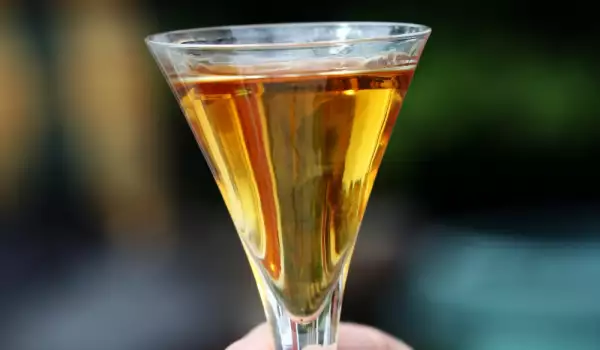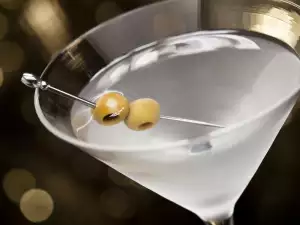Akvavit is a high alcohol Scandinavian beverage, containing about 40% ABV. Its name comes from the Latin aqua vitae - water of life.
When trying to describe the taste of this beverage, many say that it's something between gin and flavored vodka. Akvavit is not that popular a drink worldwide but despite this does have a rich history and traditions in production.
The birthplace of Akvavit is Denmark, where records of its distillation have been known as far back as the 15th century. Despite its Danish origins, akvavit has transformed into something of a regional drink of Scandinavia and a majority of the most popular brands today are produced in Norway. However, the highest number of registered brands are in Finland - about 20.
Characteristics of Akvavit
Like vodka, akvavit too is made from rectified spirits (mainly from potatoes), while certain brands even make it from grains. Caraway is mainly used to flavor akvavit but some brands add fennel, dill, cumin and even the rind of bitter oranges. The akvavit produced in Finland is flavored with cinnamon - a signature characteristic of only that country.
The difference between akvavit and flavored vodkas is that while in the latter they extract the flavors from the plant components by soaking, in akvavit they are added and re-distilled (the same way it's done for gin).
More observant people will notice that akvavit can be found with its name written differently - Akvavit or Aquavit. However both of these names apply to the exact same drink. The taste is the same, there are only some regional differences.

For example, the beverage is labeled Aquavit in Norway, while in Denmark it's written Akvavit. But again the name depicts the same thing - the water of life.
Brands of Akvavit
The most popular brand of akvavit in the world is Aalborg Akvavit, developed by Isidor Henius. It is characterized by 45% ABV and its aroma of caraway. The brand is considered the absolute standard in quality. In Norway the top brands are Loiten Export and Lysholm - both are made from potatoes, caraway and some other flavors. That which makes these 2 brands of akvavit stand out is the remarkable way in which they are aged. Both must age in barrels that set sail around the world in ships.
Serving Akvavit
Regardless of what it says on the label, locals consider the drink just another schnapps - a word originating from Old Norwegian and meaning to swallow in literal translation. This also hints at how the beverage should be drunk - very cold and in small shots. The best tasting akvavit is one cooled to -0°F (-18°C).
Scandinavians always consume akvavit with food. Traditionally, everyone present at the table must stand up and make a toast, after which they all guzzle it down. It's recommended akvavit to be drunk in pure form, with some type of food. In some cases it's used as an ingredient for cocktails. It combines best with seafood and sauces that have been seasoned with dill. A large portion of Norwegians consider akvavit a Christmas drink, after which they finish off with a beer.
In traditional Norwegian cuisine, akvavit is used in the preparation of confectioneries. It's added to flavor layer cakes and various kinds of other cakes. It's used to aromatize chocolates and bonbons. In some recipes, trout is cooked with akvavit, the belief being that this way the fish obtains a unique taste and the aroma of alcohol.
An interesting aspect in the consumption of akvavit is that it's drunk with the very smelly rakfisk - trout or salmon trout that's been salted and left to ferment in brine for a period of several weeks up to an entire year. Every November, Norwegians hold a rakfisk festival in the town of Fagernes. There, people eat the smelly fish, then wash it down with copious amounts of akvavit. Locals say that it neutralizes the otherwise incredibly specific smell.

Even though akvavit is an irreplaceable part of Scandinavian culture, inexperienced foreigners should know that the drink is very strong and excessive use can lead to an extremely severe hangover.
Production of Akvavit
Let us now offer you a relatively easy recipe for making akvavit.
Ingredients: 1 bunch dill, 3 pods of cardamom, 1 cup vodka, the rind of half a lemon, 1 star anise, 1/2 tsp caraway, 1/4 tsp dill seeds.
Preparation: Pour the vodka in a suitable jar along with the lemon rind slices and dill. Let it sit as is for 1 day at room temperature. Then remove the dill and lemon rind. To the vodka add the caraway, dill seeds, anise and leave it to sit for another 24 hours at room temperature. Finally, filter the drink, seal it in a suitable glass container, where it can be stored for up to half a year.
Benefits of Akvavit
Amazingly, the highly alcoholic akvavit was in the past considered a treatment and prophylactic against alcoholism. In the 60s of the past century it was popular as a method for improving heart function, widening the blood vessels and increasing blood flow.
Since the populations of Scandinavian countries use akvavit as a means to improve digestion and even believe that it helps in the absorption of fats from food, it is a crucial part of heavy holiday feasts, when people traditionally overeat.
Akvavit is also used to warm the body if feeling chilled. It can be added to warm tea.







Comments